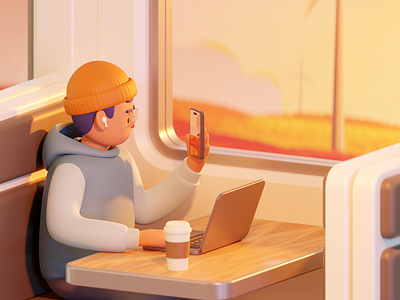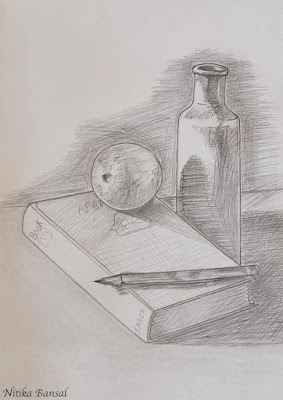"Illustration Inspiration: Exploring Styles and Techniques"
Illustration Inspiration:
Exploring Techniques
Introduction
- The terms "illustration techniques" relate to the approaches, resources, and procedures that artists employ to visualise ideas, concepts, or stories.
- These methods cover a broad range of approaches, including digital methods that make use of software and technology as well as more conventional ways like painting and drawing.
- Illustration techniques are used in print, digital media, and multimedia platforms to graphically send messages, provoke feelings, and convey information.
Various Illustration Techniques
Different Traditional Techniques
Pencil Drawing:
- Extensively utilised in illustrations for outlining, shading, and drawing.
- Gives artists the ability to produce complex drawings with different textures and levels of darkness by providing control and precision.
- Pencil grades, such as H, HB, and B, give different degrees of hardness and darkness, making them useful for shading and line work.
Ink Illustration:
- Using pens, brushes, or markers, inking techniques enable the creation of detailed features and powerful lines.
- Provides contrast and durability while having the capacity to draw precise, emotive lines.
- Frequently utilised in pen and ink artwork, technical drawings, and comic book illustrations.

Watercolor Illustration:
- Using watercolour techniques, transparent layers of colours derived from water are applied to paper.
- Enables expressive brushwork, brilliant colours, and subtle washes.
- Has the flexibility to produce graphics that are both loose and detailed, and it can blend colours and create gradients.

Acrylic Painting:
- Fast-drying acrylic paints with opacity, brilliant colours, and versatility are used in acrylic painting.
- Enables the creation of textures, layering, and blending on a variety of materials, including paper, wood, and canvas.
- Allows for the creation of vivid, textured graphics with a variety of effects and rich colour schemes.

Different Digital Techniques
Vector Illustration:
- Creating artwork with vector graphics software, like Adobe Illustrator or Inkscape, is known as vector illustration.
- Mathematical equations are used by artists to draw forms, lines, and curves that may be edited and scaled.
- Offers artwork that can be resized without sacrificing quality, as well as clear lines and strong colours.
- Perfect for producing clean, geometric graphics, typography, icons, and logos.
Digital Painting:
- Digital painting techniques use software like Adobe Photoshop or Corel Painter along with digital instruments like graphics tablets to mimic conventional painting methods.
- To add colour, texture, and brushstrokes to a canvas or other digital surface, artists utilise digital brushes.
- Enables the faithful imitation of conventional painting media such as acrylic, watercolour, and oil with the extra benefits of layers, digital effects, and undo/redo capabilities.
- Allows for creative freedom while playing with various brushes, blending settings, and textures to produce original and moving illustrations.
3D Illustration:
- Creating three-dimensional artwork with computer-generated imagery (CGI) programmes like Blender, Autodesk Maya, or Cinema 4D is known as 3D illustration.
- Realistic lighting, shading, and perspective are made possible for artists by using virtual 3D space to model, texture, and render objects or scenes.
- Digital animation, architectural rendering, and product visualisation are fields that frequently use this method.

Digital Mixed Media
- In order to make art, digital and traditional elements are combined using mixed media.
- An artist may begin with a traditional drawing or painting, scan it into a computer, and then use programmes like Corel Painter or Adobe Photoshop to digitally alter or enhance it.
- This method makes it possible to combine digital effects, textures, and fonts with hand-drawn or painted elements.


Comments
Post a Comment